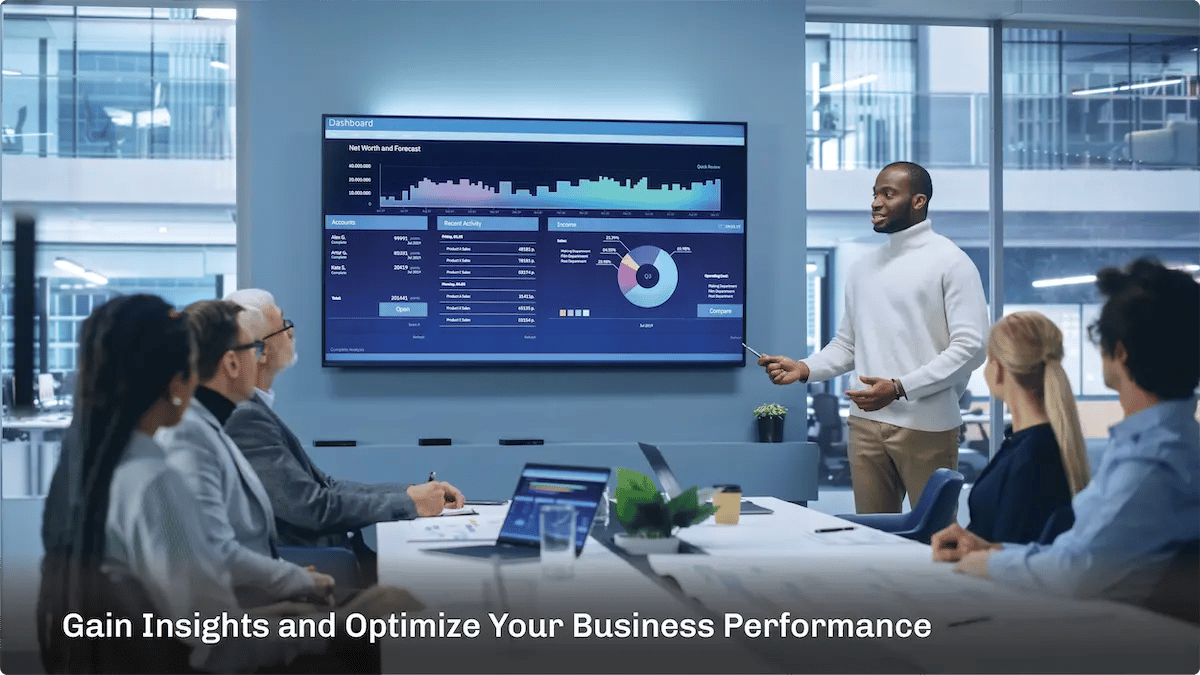Ecommerce Analytics — How Can They Drive More Online Sales?
In a world where you can track everything from a customer's purchase history to their engagement with your unboxing experience, the options for data analysis are near infinite.
Running an Ecommerce business requires a lot of behind-the-scenes work to keep your online company up and thriving. Of course, the number one focus of growing your Ecommerce business is always to drive more sales, using any means of promotion that will work.
This is where Ecommerce analytics come in. These metrics give you more information on the data-driven decisions that current and potential customers make during the sales process. If used properly, these analytics can help drive more sales to your Ecommerce site. You just need to know how to use them.
Are you ready to see what the right Ecommerce analytics can do for your business?
Ecommerce Analytics |
What Are Ecommerce Analytics?
Ecommerce analytics is the process of gathering and interpreting data based on your online store. This information is then used to analyze customer behavior and online shopping trends so that stores can better understand their shoppers. With Ecommerce analytics, online stores can use real data to make more intelligent decisions and subsequently boost their online sales.
Ecommerce analytics can include a range of different metrics from the sales journey besides just conversion. It looks at the entire process from discovery and acquisition all the way to retention and advocacy. When used properly, Ecommerce analytics will help businesses discover potential issues that may be impacting their ability to make sale so that businesses can created a smoother sales funnel.

What Are the Different Types of Ecommerce Analytics?
There are several types of Ecommerce analytics you can use to boost your company’s sales. The goal of Ecommerce analytics is to understand consumer behavior better so that the company can make more sales and stay a step ahead of the competition.
Some of the most common analytics used in the Ecommerce industry are: audience, acquisition, behavior, conversions, and paid marketing activities. Take a deeper look at these five leading analytics and what insights they can provide.
What Are Audience Analytics?
Your Ecommerce analytics all starts with data pertaining to your audience. This type of data provides detailed insights regarding audience demographics.
However, it does more than just highlight age and location, audience data provides insight into the devices your audience is using to visit your site. This allows you to specifically target your customers in a manner that speaks to them. This gives your company the ability to advertise and alter its site based on the location and type of consumer they are reaching.
What is Acquisition Data?
Acquisition data is an important piece of Ecommerce analytics as it tells you how visitors found your store to begin with. This will highlight what types of marketing channels are bringing the most visitors to your website. You will learn what channels are driving the most sales and figure out what parts of your marketing efforts are working best.
With this type of data, your store will be able to look at how paid ads, social media posts, email campaigns, and blog posts are doing so you can determine where you should be focusing your marketing resources.
What is Behavior Data?
Once potential customers get to your Ecommerce business, how are they behaving? Behavior data for an Ecommerce site will look at some of the following types of actions:
- What products are customers buying?
- What page do visitors click on first?
- How quickly are people leaving your website once they get there?
- Which products are customers clicking on but not buying?
This information can help you understand how people are spending their time on your site as well as issues that may cause customers to leave your website prematurely. With this data, you can make valuable tweaks to your website experience to encourage customers to stay longer and buy more.
How Do You Measure Conversions?
Conversion data is some of the most valuable data you can get from your Ecommerce analytics. This will help you measure when and how many users convert into actual customers. This type of data can go deep into customer behavior and tell you how long it takes for the conversion, how often they are making repeat purchases, and how many times they view your website before they buy.
Details like this can help you create better marketing messages so you can better engage with current and potential customers.
How do You Analyze Paid Marketing Activities?
Another one of the big pieces of consumer data you can get through Ecommerce Analytics is an insight into your paid marketing activities. This will let you figure out your exact return on investment (ROI) for your different paid marketing campaigns so you can determine what is working and what isn’t as part of your overall advertising budget.
How Do You Make the Most of Your Ecommerce Analytics?
Gathering Ecommerce data is only half the battle when it comes to your analytics plan. Here are a few tips for making the most of the data you collect for your Ecommerce business.
- Set your objectives before you get started. Before you start running all of these analytics, you need to know the why behind what you are doing.
- Gather data across different platforms. Don’t use just one platform to gather data, use a variety of platforms such as Shopify, Facebook, and Google Analytics to get a versatile picture of your data.
- Set benchmarks for yourself. This will help you set meaningful targets and track how you are improving over time. This can be anything from traffic to CPC for an ad.
- Use your data as part of your company’s routine. One of the best things you can do with your data analytics is to use your information weekly to make changes and establish what your priorities should be for that coming week.
- Don’t be afraid to act. Knowing when to act on the Ecommerce data you have can be a challenge. You need to find the sweet spot between giving things time to play out and acting quickly to eliminate efforts that aren’t working for you.
Conclusion
The key to using Ecommerce analytics to your advantage is, well, using them. Collecting data is important, but you need to be willing and able to implement changes based on that data to see the difference it can make in your online store.
 You've made it this far and you've learned so much. Congratulations!
You've made it this far and you've learned so much. Congratulations!
If you're looking to learn more about marketing or Ecommerce in general, feel free to reach out to us at: solutions@undigital.com
You May Also Like
These Related Stories

2023 Global Ecommerce Industry Analysis

Ecommerce Unboxed - The Basics of the Business


